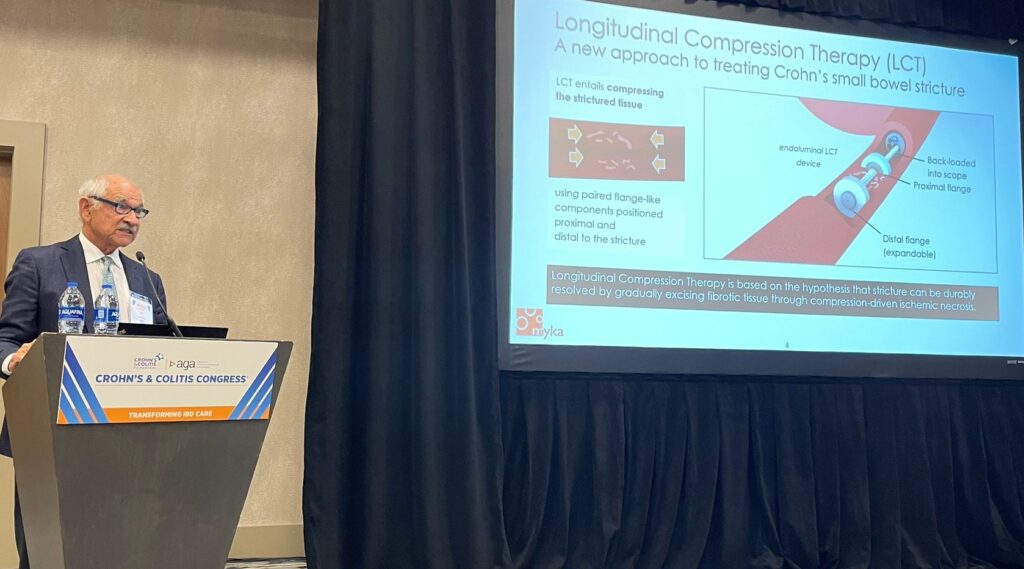It’s something that nearly every Crohn’s patient will experience at some point: a combination of inflammation and fibrosis concentrated in a short segment of the small intestine, reducing the size of the intestine’s internal luminal opening to such an extent that food can no longer readily pass. Discomfort, vomiting, and abdominal swelling are often early symptoms of this condition, known as stricture.
Although some Crohn’s strictures can resolve on their own or with specialized medicines, many do not, with patients ultimately undergoing major surgery to have the diseased bowel segment removed–surgery that can be difficult to recover from and that can put the patient at further risk for developing new strictures at the site where the remaining bowel was joined together.
What can be done to help Crohn’s patients with fibrotic stricture avoid major surgery? An innovative new approach being developed by San Francisco-based start-up Myka Labs, first reported at the 2022 meeting of the Society of American Gastroenterologists and Endoscopic Surgeons, focuses on the role of fibrosis in the pathology of strictures that respond poorly to conventional treatments.
In working with leading pediatric surgery centers including UCSF, Stanford, Vanderbilt and Munich’s von Hauner Children’s Hospital to develop new treatments for children born with the condition known as esophageal atresia, the Myka Labs team observed that gradual compression of fibrotic regions within the alimentary canal appears to achieve a remarkable result: excision of fibrotic tissue without the exacerbation of scarring that tends to occur with other excision techniques.
This experience with atresias spurred the team to begin developing new types of specialized device systems and drug-device combinations that could be used to treat fibrotic stricture.

In the first study presented at SAGES, this new approach–known as intraluminal compression–was seen to favorably resolve strictures in a large animal model of Crohn’s stricture.
Based on the promising results of this first study, the team undertook a second study that included long-term follow-up to gauge the durability of intraluminal compression as a treatment for stricture. As reported at the Crohn’s and Colitis Congress meeting, in the second study, the therapeutic response was observed to become progressively better with the passage of more and more time from when the intervention took place. This stands in stark contrast to the standard-of-care intervention balloon dilation, which, in the same model as intraluminal compression was tested, is effective in providing transient relief of stricture symptoms but is susceptible to recurrence.
The study results were presented by Myka Labs key advisor and study co-author Dr. Barry Salky.
